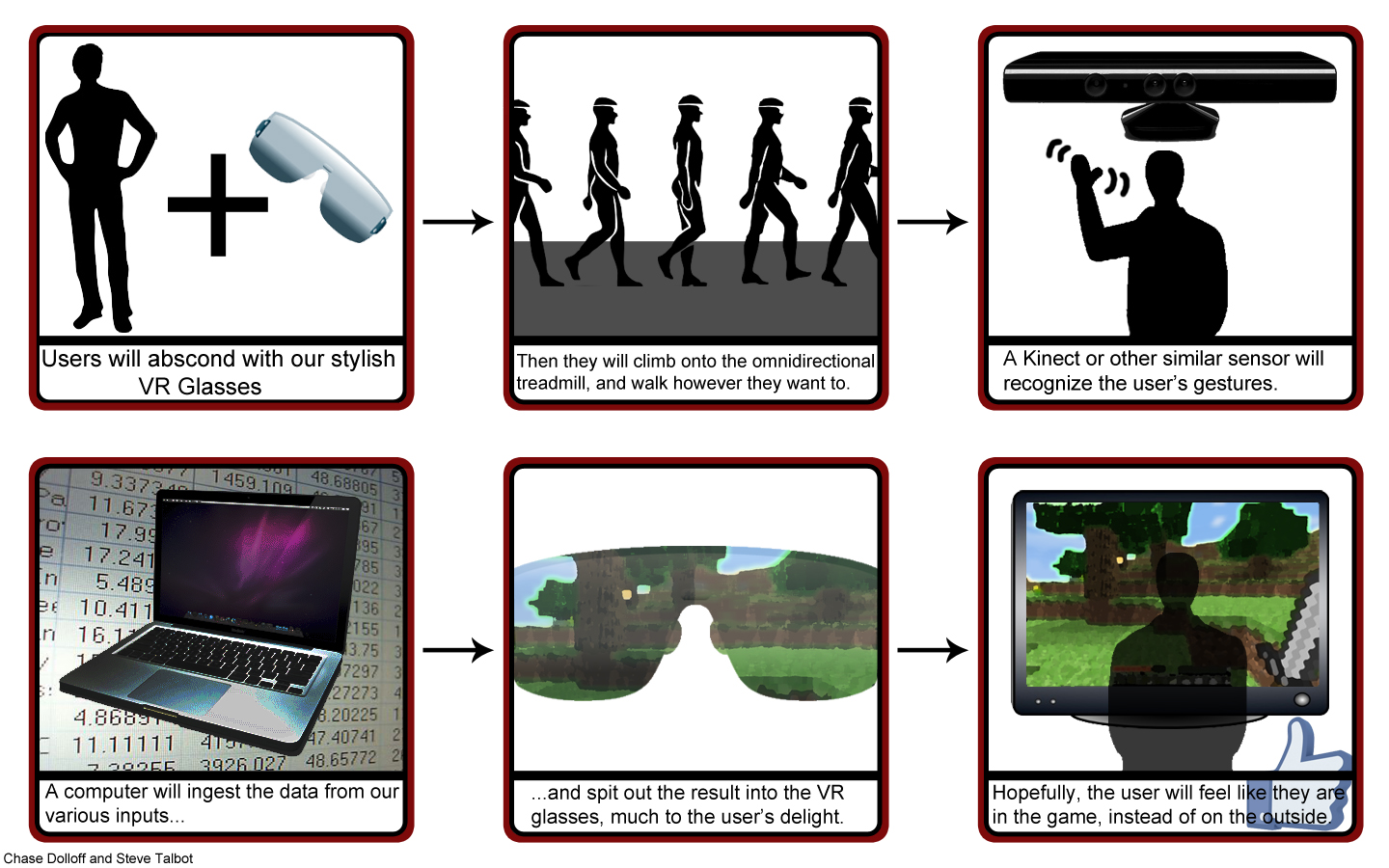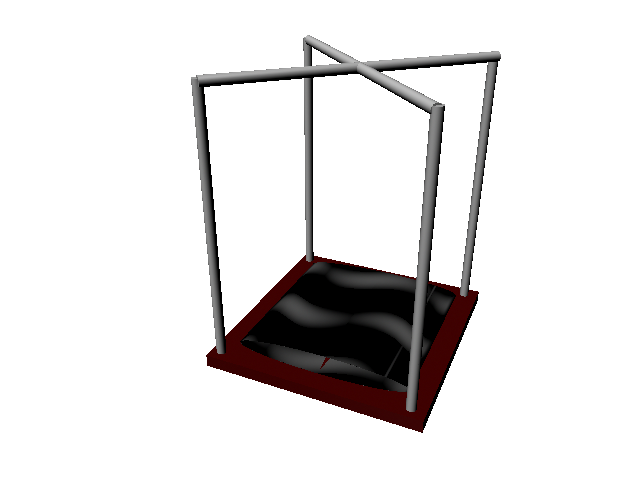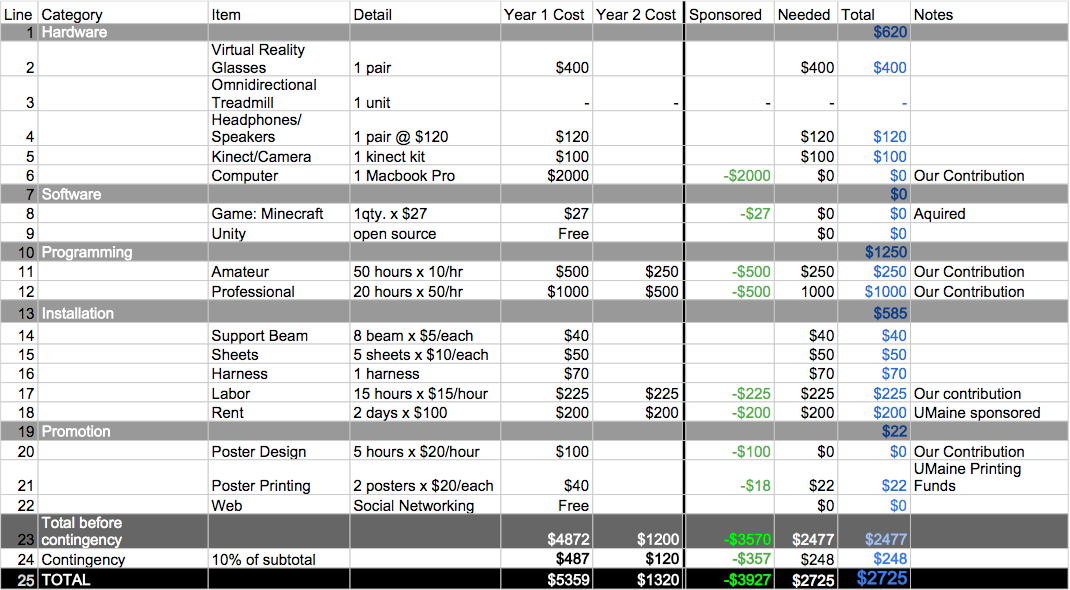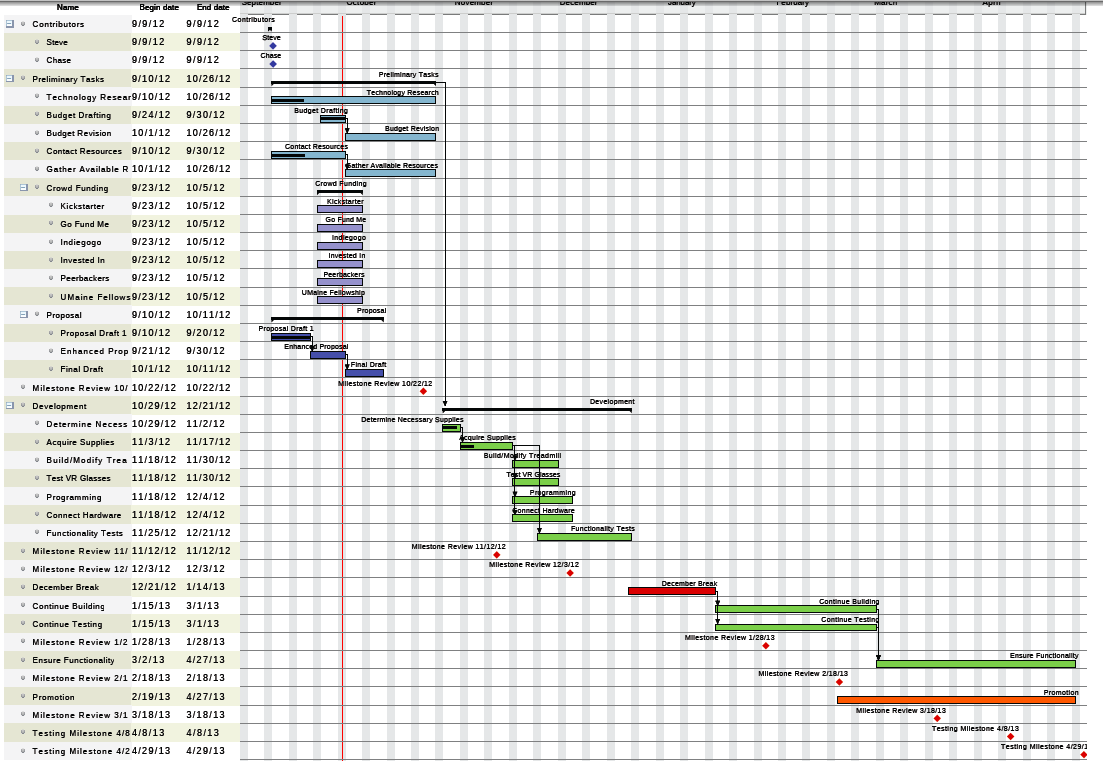Here is the first draft of the proposal for the project Steve and I are going to do.
(Draft 1)
Abstract
To create an interactive exhibit that allows users to control and view a game while providing them with a strong, unique immersive experience.
Why
As video games gain popularity, gamers are looking for better ways to play, not only in terms of graphics, but how the game is played. Over the years, companies have been developing more ways to engage gamers (e.g. the wii with their motion controllers, and the Kinect by eliminating the need for a controller). More companies are developing newer, better ways to interact with games. As the interest in new platforms expand, the opportunity to pursue such developing technology is greater.
Where
This kind of installation would potentially be usable in any setting. It would be an excellent exhibit for attracting attention at any kind of New Media show similar to Without Borders or the Senior Capstones, but it would also be an interesting addition to any public gaming scene. Also, if this kind of interface could be commercially available, then it could be something that people would like to have at home to improve their respective gaming experiences.
What
The original concept is to make to make a virtual reality game of Minecraft, a sandbox-type game made entirely of cubes (or blocks) that allows you to create literally anything you can imagine, created by Marcus Persson (@notch on twitter). The final objective of Minecraft is to slay the Ender Dragon, but of course you are by no means required to pursue this objective. You can just create anything you want for as long as you want. Currently, the game is at version 1.3.2 on the computer, but it is significantly older on the Xbox, as limitations in hardware, specifically RAM, exist.
A treadmill where users will be controlling the game with physical movement, actually walking, running, turning, looking, etc., eliminating any need for buttons. The treadmill would be modified to be omni-directional, giving users freedom to move naturally in any direction they choose, and the speed of the player would be relative to the player speed within the game. Users would wear virtual glasses to display a first person view of the world. Sensors from the treadmill would be connected to a central computer which will receive all the data and send information to the user.
The back-up intent(s):
There are many possibilities that follow the original intent that will depend on any limitations on the accessibility of hardware/ software, and the compatibility for these technologies. We would like to find a good way to interface with this game and give people an immersive gaming experience, whether that is achieved pertaining to our primary goal or not. In other words, our backup intent would be along the same lines, but simply interacting with the game in another way if need be.
If none of this turns out to be plausible, then we will pursue the possibility of getting an immersive gaming experience instead using fiducials and augmented reality glasses.
When
This Capstone will be deployed in April of 2013.
Here is a look at our current schedule of development as we expect it to go:
(Gantt Chart Will Go Here)
Who
This is a collaborative Capstone by Chase Dolloff and Steve Talbot. We shall seek further assistance.
How
This project will be completed by using all the resources that we have available to us, meaning technology and other people. Our idea will require a lot of research in order for it to graduate from the idea stage at all. We will explore options for alternative forms of communication between people and the games they play. We will need to determine the plausibility of getting a treadmill and giving it the ability to be controlled without the speed setting being necessary. Additionally, we will need to seek help from other people in order to successfully connect whatever we have for a replacement controller to the computer and figure out how to make it work to control it. All of the technologies listed above are possible things that we will use to help us complete our goal, and many of them, if not all of them, will certainly appear in our final installation.
Technologies:
-Augmented Reality glasses
-Cameras
-Kinect
-Projector/Screen
-Treadmill
-Accelerometer
-Computer
-Headphones/Speakers
Obviously, we are missing a Gantt chart, but otherwise, this has all the basic information. It will most likely be modified extensively over the course of the semester.





